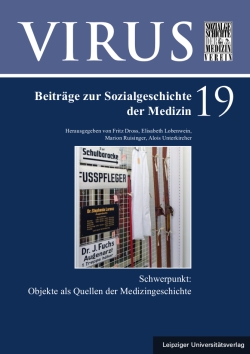
VIRUS Band 19, pp. 181-208, 2021/06/10
Schwerpunkt: Objekte als Quellen der Medizingeschichte

Since the end of the 19th century doctors and non-professionals increasingly used electricallypowered instruments in the therapeutic treatment of so-called “Neurasthenia”, which becamea mass phenomenon in Europe and America between 1880 and 1930. Based on the theories ofMaterial Culture Studies the paper argues that doctors, advertising companies and the userscharged the electrical appliances with “meaning” and “sense” that went far beyond their therapeuticbenefit. It will be shown that the marketing and mass use of the objects in the decadesaround the turn of the century initiated public discourses that contributed in the long term tochanging social norms and morals. In this way, the public discourses on the “Electric Belts”contributed to making sexual taboo subjects such as masturbation and impotence publiclycommunicable. In addition, the possession of an electrical device became a distinguishingfeature of a wealthy middle-class clientele.
Keywords: Neurasthenia, Electrical Therapy, Objects, Electric Belts, Material Cultures, 19th Century, Germany